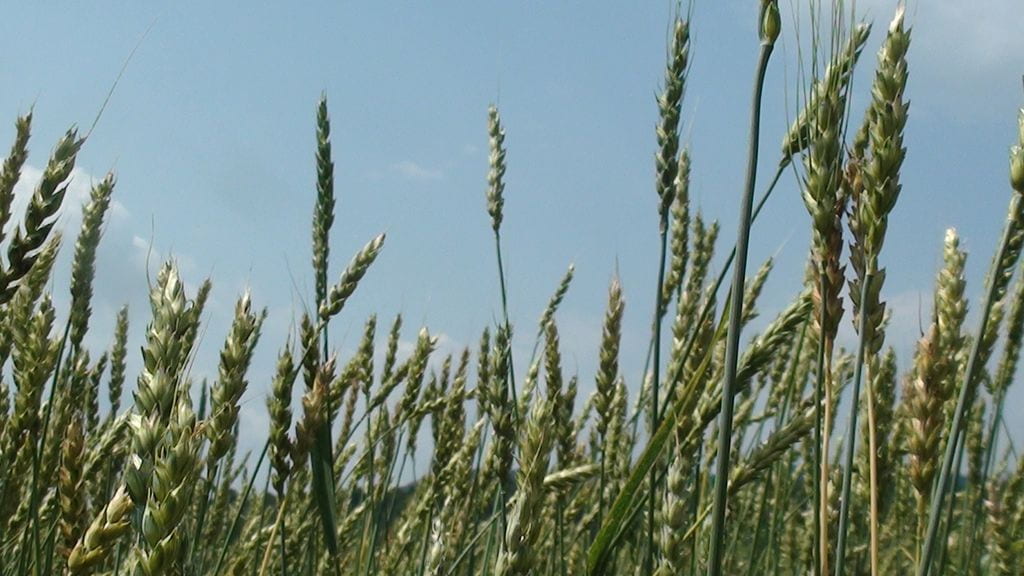How to Establish Crop Production History for Crop Insurance
As the government moves away from disaster payments and programs, New York farmers are increasing their reliance on crop insurance to take some of the risk out of their cropping enterprises.
During the period between 2007 and 2017, liabilities covered by New York farmers increased by 46% according to the USDA Risk Management Agency (RMA) Summary of Business Records.

In order for farmers to take advantage of crop insurance, certain records are necessary. Courtesy of Fay Benson.
In order for farmers to take advantage of crop insurance, certain records are necessary. To determine insurance coverage, all insurance policies have three main components:
- Number of units protected: Acres, Bushels, Tons, etc.
- Guaranteed price per unit
- Actual Production History (APH) for the crop on your farm
Once these are established a “guaranteed” amount of coverage is determined. The most time consuming record required is the APH, because in order to determine the APH database, a farm needs four years of yield records for that crop on their farm.
Without the four years of acceptable records farmers can still participate with crop insurance, but they will have to use their county’s average yields for their production history. County average yields are almost always lower than a farmer’s actual production. For each year the farmer creates an acceptable record of production, they can replace a year of the county average. RMA uses the term T-Yields for county averages. Your county’s T-Yields can be found by using the Cost Estimator tool on RMA’s website.
Acceptable Third-Party Sales and/or Commercial Storage Records
For all crops, acceptable third-party sales and/or commercial storage records must contain the following: Name and address of the buyer or the commercial storage facility, insured’s name, load or ticket number, crop, gross weight, tare weight, date weighed, and unit and/or field identification from which the production was harvested.
Production Harvested and Stored on the Farm
The producer/farmer (insured) is responsible for providing separate records of production for each unit that is stored and notifying the insurance company for measurement when production from another unit, crop year, or uninsured acreage is to be added to existing production in a single storage structure.
For weights, acceptable scale types are non-portable on-farm scales, commercial elevator scales, or grain carts. Each ticket must provide at least the insured’s name, crop, the gross weight, tare, date weighed, load number, identification and location of farm-storage structure in which the load(s) from each field are stored. The insured must hand-write any of the required information listed if the scale being used is not capable of printing a ticket or the required information.
To help with this last record keeping option, contact your Cornell Cooperative Extension Office for a free “New York Crop Insurance Education Program” – Crop Production Record Book.
Author Info:
Areas of Interest include organic dairy, on-farm processing, pasture management, grazing heifers.
For More Information:
- To find a crop insurance agent, visit the RMA Agent Locator.
- For more information on crop insurance options in New York, visit the New York Crop Insurance Education Program.
- This article draws information from the Acceptable Records of Productionpublication by American Farm Bureau Insurance Services, Inc.
Resource Spotlight:
- Through support from the USDA Risk Management Agency, New York Crop Insurance Education Program support New York farmers to make informed risk management and crop insurance decisions through face-to-face training, trade show participation, diverse print advertisements, and a variety educational materials disseminated both in-person and online. Their 15 partnerships, mostly local cooperative extension teams, allow us to reach nearly all regions, demographics and specializations of NY agriculture. Their partners play a key role in development of education materials and innovative delivery methods. They focus on crop insurance basics, PRF, crop insurance options for dairy farms, and WFRP, as well as topics designed to meet the needs of under-served farmers such as women, veteran, and young and beginning farmers.
-
Looking for technical content on all aspects of dairy and field crop production?The South Central NY Dairy and Field Crops Team has launched a new blog featuring all sorts of useful information, including: herd health, cow comfort, forage quality, dairy facilities, and grazing. It also covers a range of farm business management topics, from record keeping and risk management to leadership and human resources. The blog willalso feature upcoming events, success stories, and research updates. The blog is free and easy to subscribe to for anyone with an email address. As a subscriber, you can expect to get email updates when a new post is published, as well as well as an invitation to contact team members about topics of interest for future posts. To subscribe or just check it out, visit their website here.
Reprint Info?
This article was published on May 13, 2019 by Cornell University.

